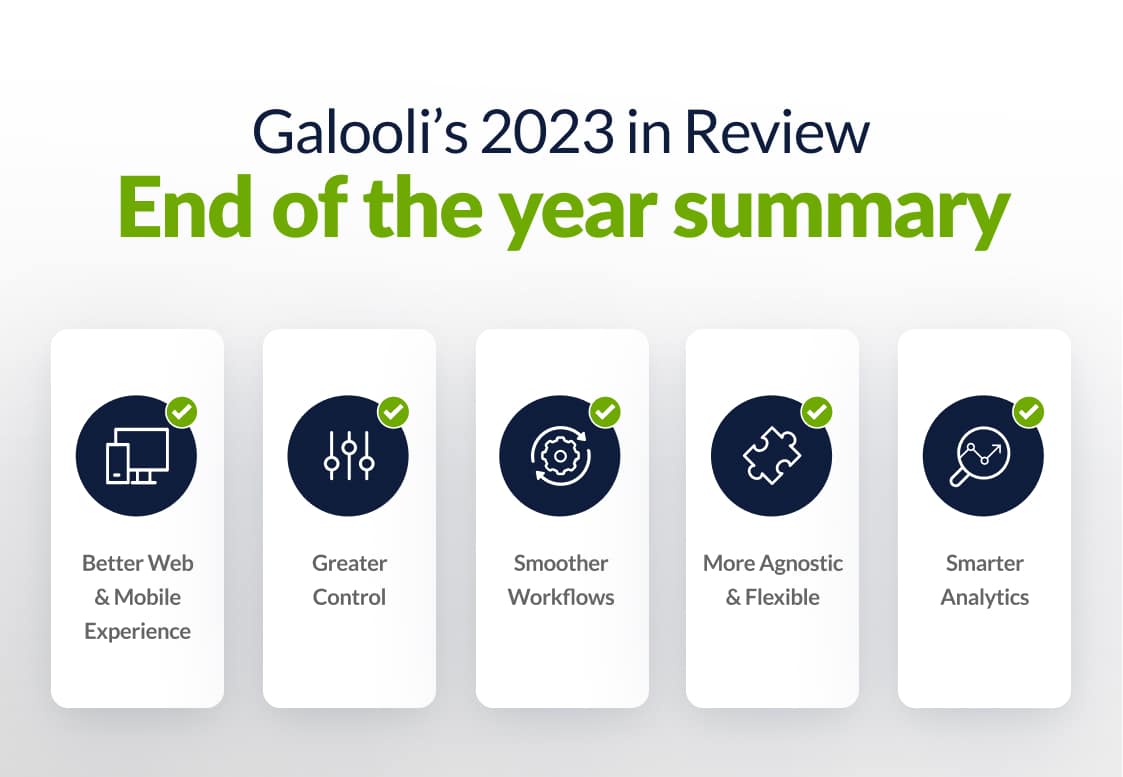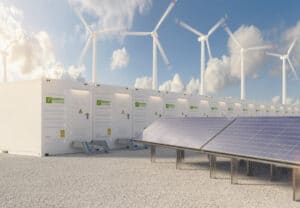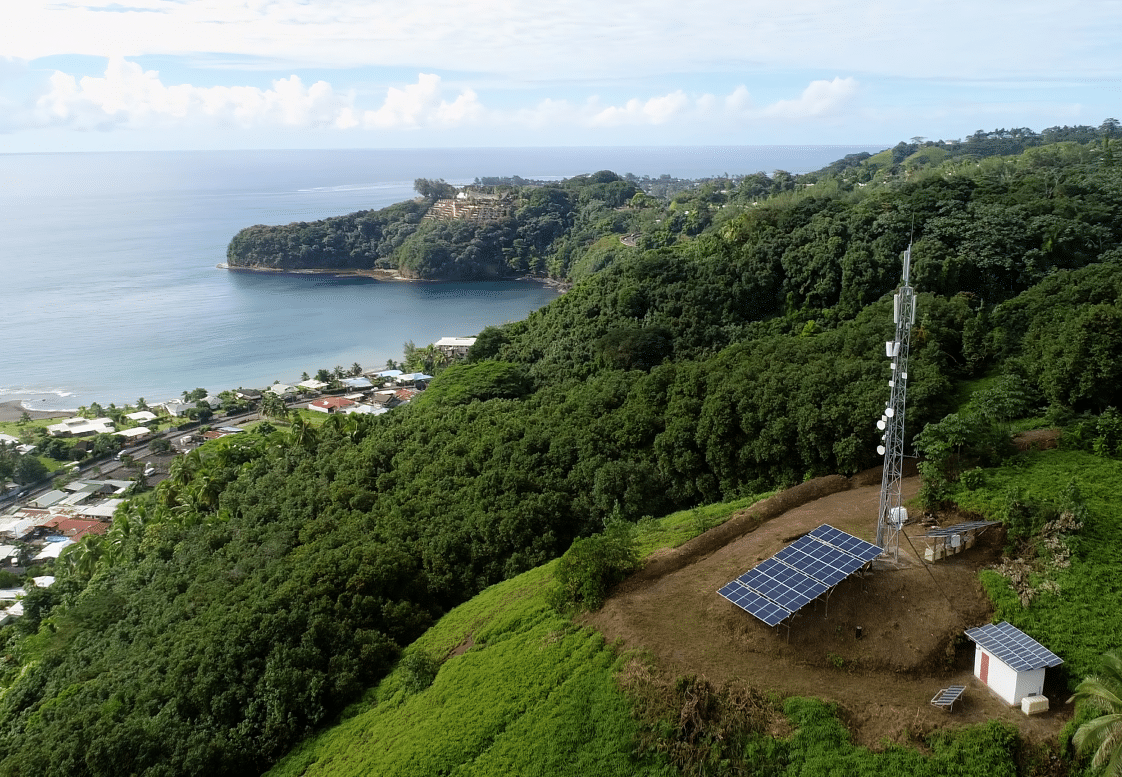
A microgrid is almost exactly what it sounds like; a smaller, scaled-down version of a typical central electric grid. Large national or municipal grids are used because centralizing distribution of most services is the most efficient possible form, so why does anyone bother with microgrids?
As the last couple of decades has shown, climate change is a growing threat to all forms of infrastructure. This is especially relevant to energy grids, as higher temperatures and increasingly frequent storms put more and more strain on these networks.
The United States saw 20 natural disasters that caused over one billion dollars in damages in 2021 alone. With the scaling challenges of climate change looming, taking control of your grid has become more important than ever.
First, let’s discuss what exactly is a microgrid more in-depth, and how they work.
What is a Microgrid?
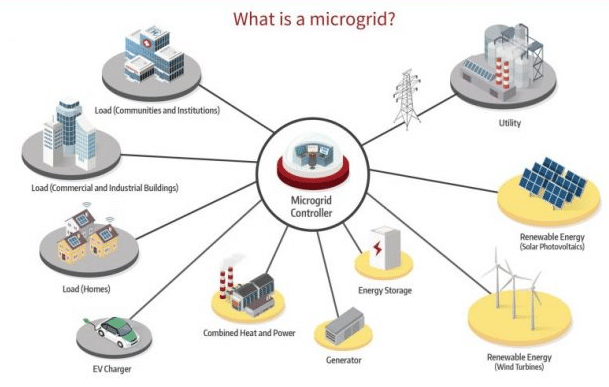
Microgrids are a form of an energy system where a group of buildings or a neighborhood develops and implements its own self-contained network of power. A microgrid draws power from utilities just like the central grid but has supplementary energy production and storage that augments its daily functions. The specific configuration and resources of any microgrid are determined by the needs of the facilities relying on it.
This self-contained network of energy assets can operate invisibly alongside the main grid and then seamlessly transition into a fully independent energy system. To accomplish this, microgrids incorporate an active, intelligent control module that helps compensate for vulnerabilities and improves overall performance.
Moreover, to effectively manage and keep these energy assets working at peak capacity, remote monitoring solutions can provide accessible visibility and insight into their performance. By augmenting the control functions of a microgrid with enhanced oversight operators can minimize risks and effectively maintain these independent energy networks.
Why go through the hassle of setting up a microgrid?
The main factors to consider when thinking about developing your own microgrid are site security and the reliability of the centralized grid network. Especially in regions where grid access is inconsistent, or fuel theft and vandalism are rampant, microgrids can provide the energy stability needed while keeping workers and contractors safe.
Safety features are the weakness of any centralized system because it takes the responsibility out of the hands of the people relying on that system and creates barriers to dealing with vulnerabilities. Microgrids resolve these accessibility issues and can also integrate extra security features because of the greater degree of focus.
Microgrids can also:
- Collect data – A microgrid tracks energy use patterns to increase overall system efficiency and reduce energy costs by actively managing unused equipment, rooms, or even buildings.
- Improve sustainability – With the increased connectivity comes the ability to enhance the integration of renewable energy with the microgrid to maximize a network’s sustainability and reduce its carbon footprint.
- Optimize maintenance – With advanced prediction and malfunction reporting capabilities that reduce the need for in-person oversight, microgrids can decrease response times and minimize the impact of any emergency.
- Increase efficiency – Generating the electricity for a microgrid from assets that are closer to customers means that less of power is lost in transit. In addition, the enhanced control over energy assets lets microgrids plan their load balance more effectively.
The increased accessibility also enables extra responsiveness and flexibility with demands that otherwise overwhelm centralized electric utilities. In municipalities with inadequate facilities, spikes in demand can regularly knock out the power supply.
Even areas with fully functioning grids do not bother to have the capacity for exceptional spikes, leaving their customers without power. A microgrid is able to address the local energy situation and compensate for gaps without wasting resources and building extra energy capacity.
Most importantly, microgrids provide facilities and organizations autonomy from traditional energy purchasing, and even in some cases sell it if enough excess energy is generated. If there is a reasonable concern about any of these factors, a microgrid could be the solution.
Who is using microgrids?
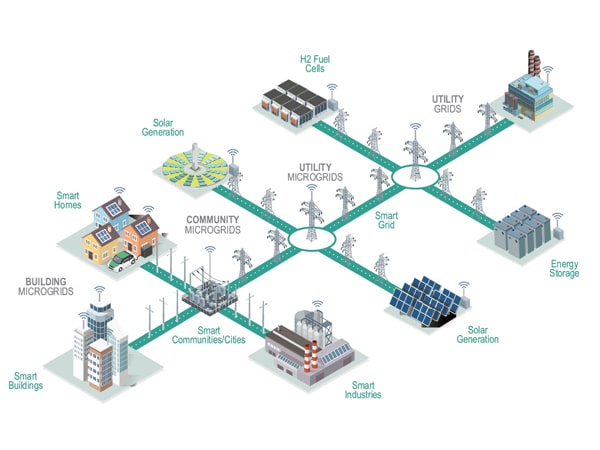
Microgrids are historically popular grid formations in a variety of different settings and scales.
The primary limiting factors to more widespread microgrid use are:
a). A large enough energy requirement to justify the investment
b). An incentive to take control of their energy supply
This has limited the application of microgrids for the most part to large communities with security concerns like military bases and institution complexes, but they have seen use in the following:
Hospitals
Medical care is always in high demand, with many critical services that people literally depend on to live. Furthermore, modern developments in medicine include a wide array of electronic equipment, making medical facilities require more power than the average building. This makes microgrids extremely useful as an extra source of electricity as well as insurance against local power failures causing irreparable harm.
Smart communities and buildings
In the face of increasingly frequent extreme weather and the effects of climate change, many communities in North America are choosing to invest in securing their energy supply. These microgrids are concentrated on supplying power to essential services such as firefighters and police departments. Supported facilities also serve as shelters during particularly dangerous weather events.
Government and corporate campuses
Some governments pushing for microgrids lead the way by installing backup systems in their capitals. Albany, New York is supporting its governing complex almost entirely through its own microgrid. This way, the government can preserve its bureaucratic functions in the face of all kinds of challenges. This also provides increased durability in the case of natural disasters or political unrest that damages critical infrastructure like the grid.
Utilities
While seemingly in direct competition, utilities are discovering ways that they can use microgrids to satisfy their customers while retaining control. By investing in microgrid technology, utility companies are able to offer customizable solutions that lower the cost of producing and using energy.
Advances in monitoring and management technology have made the centralized aspect of microgrids more accessible than ever. It has become possible to create a microgrid network out of almost any collection of buildings and energy assets.
The full range of applications for microgrid technology has only just begun.





















